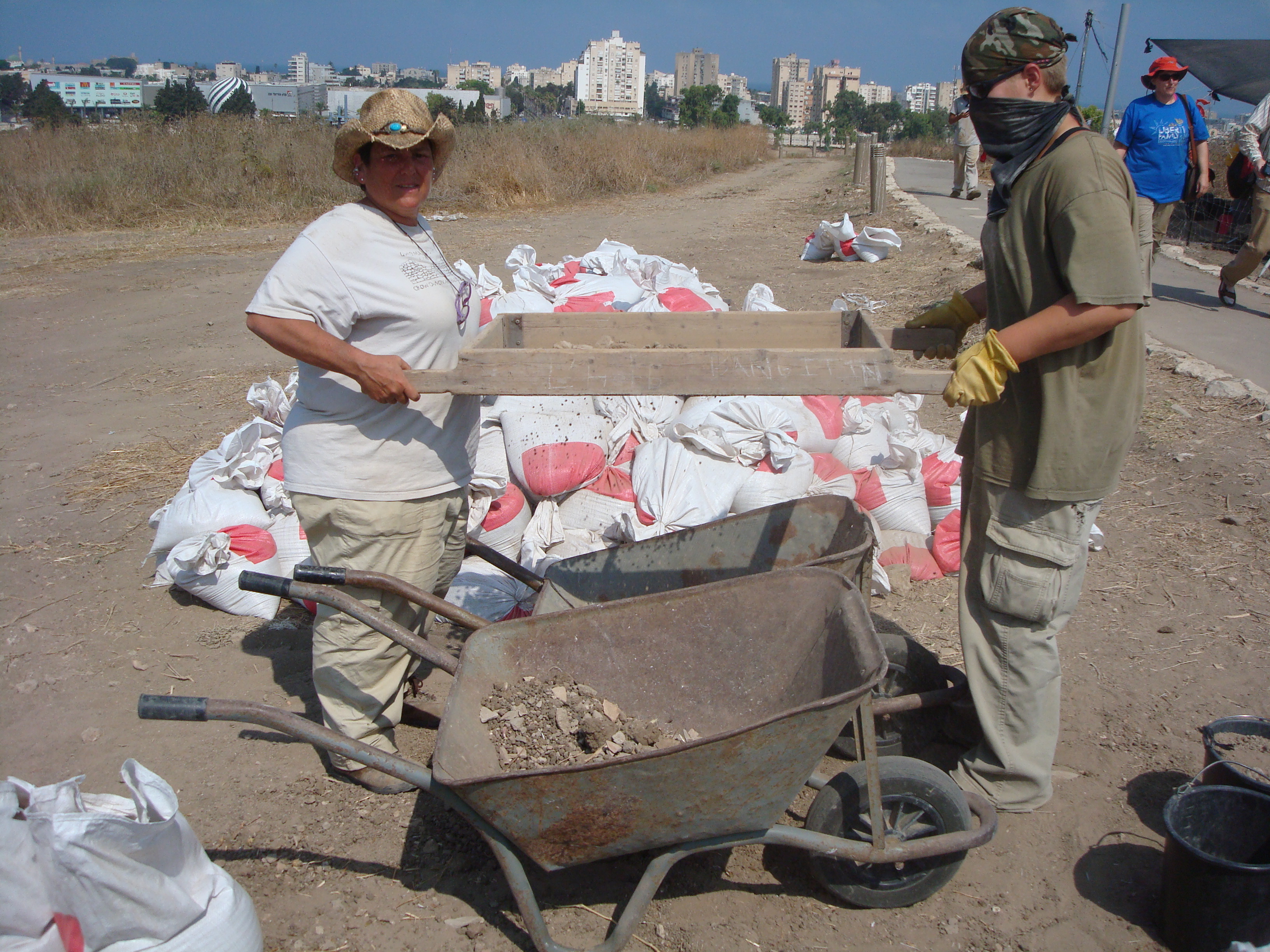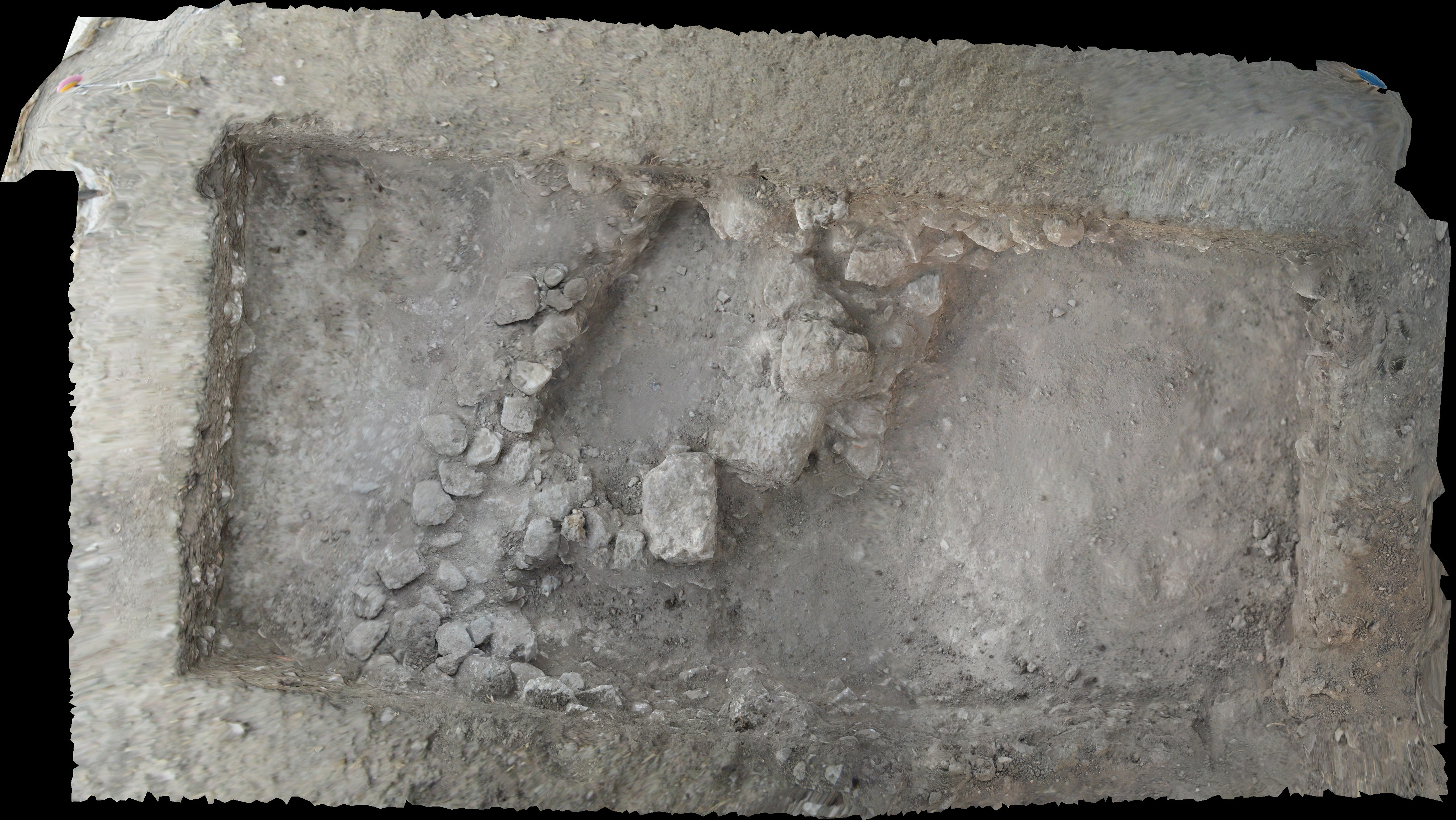
Credit: Jill Bierly
I was wet screening some dirt from the probable metals working area the other day, sitting under a shade near the path that winds up and around Napoleon Hill (Tel Akko) when two small boys, 8 or 9 I’d guess, walked by. They asked me in Hebrew if I was looking for gold. I said no, iron. They gave me the strangest look, stopped for a second, and then began walking on. As they got about 6 feet in front of me they turned and said, you are looking for gold. And they walked off.
Gold and silver, those are the precious metals that everyone thinks of when they think of prospecting or looking for ores and such. But, for archaeologists in most places, the use of copper and then iron ores for metalworking is far more important. Copper is the only metal beside gold and silver that occurs in its native form on Earth. Just as one can find gold nuggets, copper nuggets – not as shiny bright and not as valuable – are also found. Native copper is the only indication of metal working of any kind in North America in pre-contact times. The nuggets were hammered into tiny bells or other ornaments, but Native Americans never smelted copper or any other metal.
In the Middle East, however, copper, bronze and eventually iron were smelted and worked. Last year at Tel Akko, during the excavation by the Penn State and University of Haifa, Tel Akko project, excavations revealed a potential metal working area. This year, a new area, next to the original was excavated and examined by students and a researcher from the Weizmann Institute.
Remember Wooly Willie or other metal filings games where you move the iron with a magnet to create hair, beards, etc.? Run a magnet through the dirt in these two areas and the magnet looks like Wooly Willie with a full beard. The number of hammerscales – tiny pieces of iron that fall off when hammering iron into shape – is truly amazing. The area also yielded pounds of iron slag. In other areas of the Tel copper slag appeared as well.
The first or second day of the dig, I found, in situ – in the ground in the original location – part of an iron blade. Yes, I was digging in the same location with all the hammerscales. Today, one of the last days of digging, someone found an iron arrowhead that is probably late Iron Age early Persian.
Some say that Akko was famous for metalworking. Certainly indications from this year’s excavations suggest that some ironworking went on in the Persian period, if not earlier.



